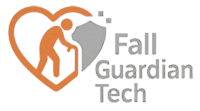To prevent accidental falls, older adults should adopt a multifaceted approach involving proactive self-care and environmental adjustments. Key areas include physical activity, cognitive exercises, home modifications, nutrition, and medication management.
1. Physical Activity & Fitness 💪
Regular exercise is essential for older adults—it enhances physical health and significantly reduces fall risk.
Why Exercise Matters
- Physical & Mental Benefits: Strengthens heart and lung function 🫀, improves vascular health, boosts metabolism, and lowers risks of cardiovascular/respiratory diseases. It also supports brain health, enhances oxygen flow, and improves mood while reducing anxiety/depression.
- Social Engagement: Group activities promote social interaction 👥, build connections, and combat loneliness.
- Chronic Disease Management: Helps manage conditions like hypertension, diabetes, and osteoporosis.
- Direct Fall Prevention: Strengthens leg muscles 🦵, improves balance, sharpens reflexes, and enhances body awareness.
Exercise Guidelines
- Activity Selection: Choose suitable exercises based on health status, age, fitness level, and medical conditions.
- Health Precautions: Those with heart disease, uncontrolled hypertension, or recent fractures should consult a doctor first 🩺. Osteoporosis patients must avoid high-impact exercises.
- Workout Structure:
- Warm-up (5–10 min)
- Main activity (30–60 min)
- Cool-down (5–10 min)
- Self-Monitoring: Track heart rate, breathing, and exertion during exercise. Stop if dizzy or short of breath.
Recommended Fall-Prevention Exercises
- Outdoor:
- Indoor: Chair yoga, light strength training, or balance exercises (ideal for limited mobility).
2. Cognitive Health 🧠
Cognitive decline increases fall risk. Keeping the mind sharp is crucial for safety.
- Why It Matters: Cognitive skills (e.g., attention, judgment) help navigate hazards and react quickly.
- Cognitive Risks: Slow reaction time, poor focus, or memory lapses raise fall risk.
- Training Tips:
- Memory: Practice recall (e.g., lists, stories).
- Attention: Try puzzles or dual-tasking (e.g., counting while walking).
- Community Programs: Join local brain-health classes.
3. Home & Community Safety 🏠
Over 70% of falls occur at home. Environmental tweaks are key to prevention.
Goals: Enhance safety, independence, and confidence in daily life.
Home Modifications:
- Flooring: Remove tripping hazards (rugs, cords), use non-slip mats.
- Lighting: Ensure bright, even lighting (add nightlights). 💡
- Grab Bars: Install in bathrooms & stairways.
- Furniture: Secure unstable items; keep essentials within reach.
- Stairs: Add handrails and anti-slip treads.
Community Spaces:
- Well-lit pathways with smooth surfaces.
- Clear snow/ice promptly. ❄️
- Accessible parks with senior-friendly benches/exercise stations.
4. Nutrition & Medication 🥦💊
Diet and medications significantly impact fall risk.
Nutrition:
- Balanced Diet: Whole grains, lean protein, fruits/veggies, healthy fats. 🥗
- Vitamin D: Critical for bone/muscle health (supplement if needed). ☀️
- Hydration: Drink water throughout the day. 💧
- Cooking: Opt for baked/steamed foods over fried.
- Polypharmacy Risk: Multiple medications (e.g., sedatives, blood pressure drugs) can cause dizziness or imbalance.
- Tips: Review meds with your doctor; never self-adjust doses. Report side effects promptly.
5. Health Education 📚
Older adults should stay informed about fall risks and prevention through workshops or reliable resources (e.g., CDC.gov).
6. Additional Strategies
- Prevent Dizziness: Rise slowly from sitting/lying positions to avoid blood pressure drops. ⬆️
- Vision Care: Update eyeglasses annually; treat cataracts/glaucoma early. 👓
Adapted for U.S. audiences with culturally relevant examples and safety standards.
